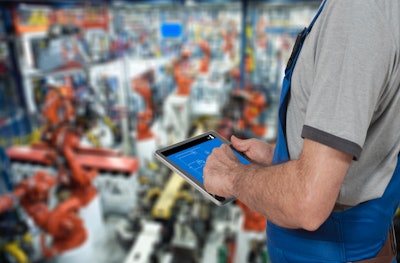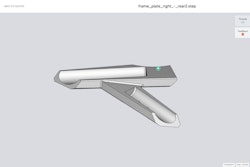
 Marco Nielsen
Marco NielsenWith the flood of technological change -- and agile methodology is a great example -- it is easy to forget the connection between the software development process and user experience. As more and more enterprises shift towards mobile, it is imperative to key in on the end user. Usability should be the chief concern when optimizing mobile solutions. This can mitigate some issues for employing enterprise mobility.
Enterprise mobility offers manufacturers growing flexibility with innovations that include better data management, process efficiencies and lower costs. The benefits will accelerate as mobility strategies shift further toward the cloud and embrace agile methodology for flexible, continuous software development.
There are three challenges enterprises face in switching to mobility.
- Mobile Security
- Transitioning away from Windows Mobile/CE legacy systems, and
- Managing the “AppGap”.
In this shift towards agile technology, there are many moving parts to be aware of. With integrating personal devices into the enterprise, security is a major concern. Proper authentication procedures must be actioned to ensure no personal or company data is compromised. Coordinating with employees using the mobile devices is crucial, to avoid any usability issues.
Additionally, in 2020, Windows Mobile and CE operating systems will have support completely shut off. There is no clear migration path, so companies need to get ahead of the curve. By converting your mobile platforms in advance, enterprises can save time, money and the headache of transitioning entire rugged device fleets. Involving the end user in the process of converting away from legacy systems equates to a smoother transition.
To avoid a disorganized array of mobile apps, the AppGap, enterprises should employ unified endpoint management (UEM). This solution helps customize and control apps across all of your devices on one platform. UEM helps fleets run more efficiently while helping streamline app usage
The Future of Mobile
To understand the importance of embracing the connection of the end user and developer, let’s back up a moment to look at the technology landscape.
While the switch to mobility is happening at breakneck speed, the pace will continue to accelerate. By 2020, 48 percent of the workforce will be mobile. This number will rise 70 percent for small business. The question that lies here is, “How do manufacturers get ahead of this change, while connecting with the end user?”
The end goal is a business landscape with the various moving pieces united by mobility. Instead of multiple and often isolated technology channels throughout the supply chain and manufacturing process, the new trend is toward a single technology platform with a growing mobility component. A unified enterprise model is a more effective way of implementing a business strategy.
Within software development, agile methodology has seemingly been adopted by every industry, but manufacturers can take special advantage of mobile solutions at every touch point in a supply chain as well as manufacturing and distribution.
Manufacturers need to use mobility to optimize their business while keeping end users and customers in mind and, in fact, soliciting and monitoring the user experience to make continuous improvements in product quality and service. Combining user feedback with mobile optimization is the only sound strategy for the future of the industry. This not only keeps the bottom line intact but is more efficient and strengthens the relationship between manufacturers and end users.
The lack of a dialogue in the development process can lead to major issues:
- Software that does not fully meet business requirements;
- Cost inefficiencies and discrepancies in data management; and
- Overall bad user/customer experience.
Engaging End Users
With all of the recent technological advances in the mobile space, it is crucial to involve end users in development rather than usability testing. Mobile fleets are no longer just a row of tablets. From personal device integration to wearables, the industry is rapidly changing.
These new trends offer potential to manufacturers that can help to enhance the connection between mobile app developers and end users. Agile solutions are helping plants cut costs while increasing productivity. The key is to involve employees in the integration process.
Automation will soon become an even bigger part of the manufacturing industry. End users need to be able to integrate these solutions into the manufacturing process and this circles back to their involvement in development.
Immersive technology and wearables are other new trends that are not as far away from industry integration as people may think. Advanced camera function in mobile devices is changing the application of mobile fleets for plants. Specifically on the supply chain, this can optimize inventory and processing while allowing end users to stay flexible and work from anywhere.
All of these new trends and innovations are propelling the manufacturing industry forward. Mobile solutions allow for staff to remain productive on the go, while UEM can integrate apps for a streamlined supply chain process. Despite this, all of these functions are not effective if not properly utilized by employees. Thus, the only way to ensure a smooth transition away from clunky, legacy systems and towards agile platforms is to involve end users up front in the development process.
Marco Nielsen is vice president, managed mobility services at Stratix.





















